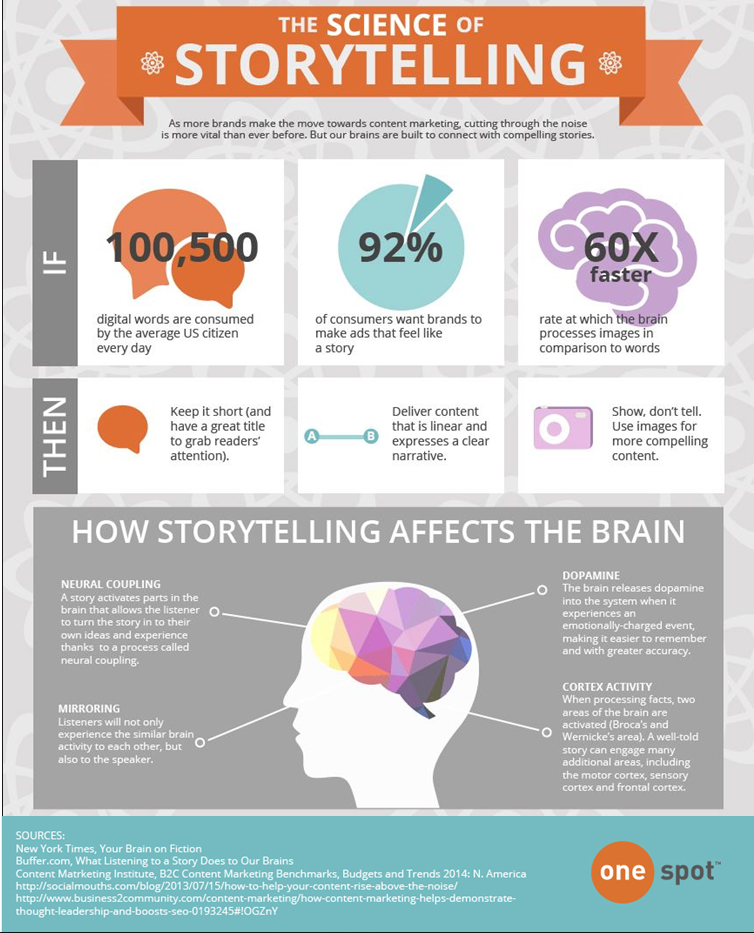Remember when you were young, and you couldn’t wait for an adult to read you a story? Or maybe you experience that now with your own kids, who want their favorite stories told to them over and over.
The reason is simple: stories are powerful and emotional vehicles to convey information, especially in the age of word-of-mouth and social media/social sharing. A story is also “shapeable” by each individual who encounters it, taking on a personal touch related to his/her own experiences. The best marketers are capitalizing on storytelling to have the greatest impact on their customers.
Storytelling is an art…and a science.

With Americans consuming 100,000+ digital words every day, it’s not surprising that the majority (92%) want the information delivered in a story format. However, there are a few important points to keep in mind to insure that the story being told is both relevant and adds value in ways that grab a customer’s attention and is retained:
Define your three critical words. Michele Linn of Content Marketing Institute espouses that each company/brand should define three critical words (or what we at refer to as their “essence,”) so that they have a consistent voice. It can be difficult to have consistency across departments since different ones “own” distinct aspects of marketing and communications, and each has its own distinct voice. At Evolution Strategy Group, we help clients develop a content strategy statement to keep all of their content focused and in line with their mission, target audience(s), business goal(s) and content objectives. Linn’s three words, incorporated into the content strategy statement, help to shape your story and deliver a unified, consistent voice.
Keep the customer in mind, rather than your company or product when developing your story. Listening to your customers, understanding the issues that matter to them and what they want to talk about will help you to create a resonant story. This customer-centric approach shifts the focus from products to solutions, making your content less about you in the traditional sense of banging the customer over the head with what you do but rather, why and how it benefits them.
Live it. After you define your story, you can’t dabble with using it. The story should be the heart and soul of your marketing and communications planning. Scott Donaton, Chief Content Officer, North America for Digitas LBi says it best, “Companies need to be fearless in their commitment to storytelling… Once the narrative is decided, it should be amplified in all communications channels.”
Be true to the brand. This is critical in order to obtain customer buy-in. Keep in mind that the ruse is up when authenticity disappears; both loyal and potential customers can usually distinguish what’s real and what’s not. Ensure that your story is consistent across all of your marketing efforts to enhance the likelihood that your story will be seen and heard in the places your customers need it to be, and at the right times during the decision-making process.
Continue to listen to the customer. Ultimately, your story evolves and grows as customers respond to it. Data insights and direct customer feedback can help modify and evolve the story so it remains meaningful for your customers. According to proprietary research from IGA’s UM (Donaton’s former company), custom content is 92% more effective than traditional TV advertising at increasing awareness and 168% more powerful in driving purchase preference. Those are hefty statistics.
In the end, your story must be unique to you and deliver your voice to the customers in a way they can and will hear it. Be compelling, stay true to your brand and embrace consistency across and within the company. Paint with a broad but focused brush for success. Together, the art and science of the story are critical to a successful content strategy effort.

